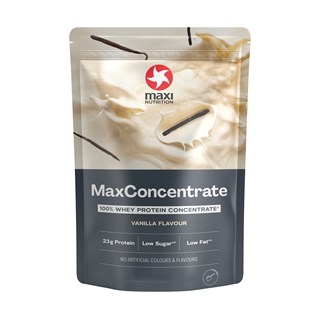Change up your training routines, start seeing improvements
With many of us wanting to focus on creating an improved version of ourselves, despite the best of intentions, we often lose focus or drive. Whether you’re looking to lose weight, bulk-up or run a marathon next year, start as you mean to go on with our top 5 tips for smarter training.
Change Your Lifestyle
Jumping head-first into a new diet or exercise regime stimulates a brain region called the ‘prefrontal cortex’ which is responsible for focus and willpower. An abrupt shift in lifestyle welcoming more free time is an attractive proposition. However, just as a muscle needs to be carefully trained before you can attempt to lift a heavy weight, your brain needs to be trained to bare a heavy cognitive load. A dramatic alteration in diet or exercise doesn’t allow for such training and easily overloads the prefrontal cortex, perhaps explaining why ~88% of us fail to keep our new found enthusiasm. The key is not to go "all-in" too soon, but instead make gradual long-term changes to your lifestyle. Implement small but steady increases in exercise volume and frequency, coupled with sensible but meaningful dietary changes. And most importantly, inspire your progress by setting short- and long-term goals to help you stay on track.
Train on an Empty Stomach
If you’re training for weight-management or to reduce body fat, then training on an empty stomach will be an important step in achieving your targets. Avoiding food for around 2 hrs before a given exercise session will ensure you begin exercise with stable blood sugar levels, which is an important prerequisite to encourage fat burning. This is, of course, much harder if you’re doing high-intensity exercise, and so choosing when to implement this strategy requires careful planning. For steady aerobic/endurance exercise, however, training a minimum of 2 hrs after eating will help you become more efficient at mobilising and burning fatty acids in the long-run. Try training in the morning before breakfast, when your body is slightly depleted, to get the best results, and follow-up your session with a tasty nutrient-rich meal.
Be Organised With Your Training Routine
The key to success with any new exercise programme is to incorporate sessions into your daily/weekly routine, and plan exactly when and where they are going to take place. Just as you would plan ahead for a lunch date or a trip to the dentist, note your training sessions in your diary; this is an excellent way to cement the session in your mind as a scheduled appointment, thus encouraging you to stay on the wagon. It is also worth-while keeping track of each exercise session, exercises and intensities, in a training-log. Not only will this help you track your progression over time, but evidencing your progress and seeing how far you’ve come will inspire you and help with adherence to the programme.
Integrate Aerobic and Resistance Exercise
There is much to be gained from incorporating both aerobic and resistance exercise into your schedule. Aerobic/cardiovascular exercise is important to improve your aerobic fitness and cardiovascular health, in addition to burning calories of fat. However, many people, particularly females, are apprehensive about resistance training for fear of developing a muscular physique. In reality, building muscle requires a great deal of effort, lifting heavy weights over a long period of time and testosterone concentrations usually only found in males. We can lose body fat much faster than we can gain muscle. So there is no need to shy away from resistance training which is helpful for developing functional strength, burning calories, and developing toned, lean muscles. Combining both types of training into your programme will be important to keep you interested and improve adherence. Modify your training regularly, and consider trying circuits, exercise classes or invite your friends to join the local football/netball club.
Rest Days
The start of a new exercise regime can result in muscle soreness and tiredness caused by small tears in the muscle fibres that can take days to recover. Similarly, regular training, particularly high-intensity exercise, can deplete your body’s nutrient stores resulting in a weakened immune system. Not allowing enough recovery time can, therefore, lead to injury, illness and under-performance. It is important to include periodic rest-days into your training, and follow hard-training days with easier sessions to tip the depletion/recovery ratio in your favour. Every 4 – 5 weeks you should also take a ‘rest week’ during which you reduce the volume and intensity of your sessions by about 50%, before starting fresh and repleted the following week.
When striving to achieve your exercise targets, there is no magic formula or secret to success. It requires dedication, discipline and a little hard work. However, it can also be fun and rewarding and will bring with it a plethora of health benefits to improve your quality of life. Integrate these tips into your routine to help you achieve your targets, and train hard.






















